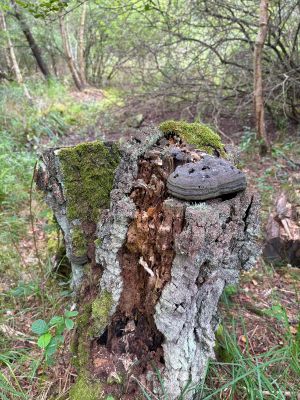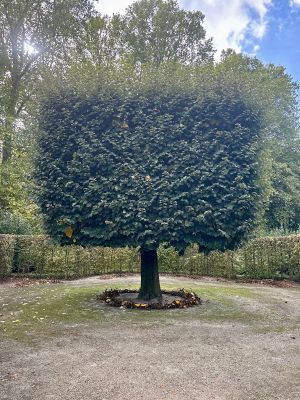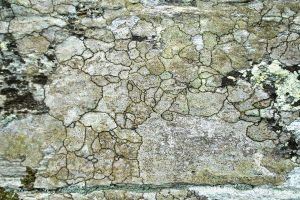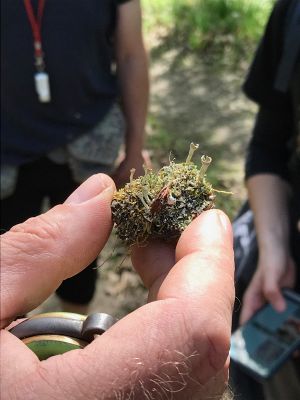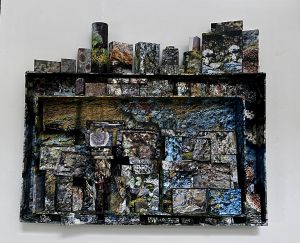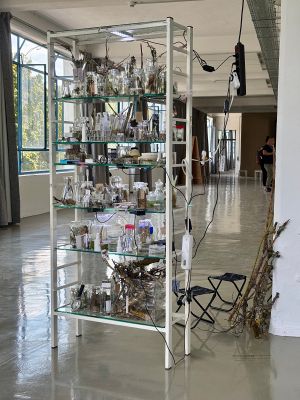m (Miga moved page Relationship patterns in the environments to GMU:Relationship patterns in the environments) |
mNo edit summary |
||
| (14 intermediate revisions by the same user not shown) | |||
| Line 1: | Line 1: | ||
== '''INTRO/pDF/Keynote 10/2025''' == | |||
[[File:2025 Klaus Herbst Patterns.pdf|thumb|Intro Short Keynote by Klaus Fritze]] | |||
Keynote-Introduction 8.10.2025 | |||
'''Please note change from the course catalog and Bison: The specialist module takes place on Thursdays between 9:00 a.m. and 12:30 p.m. in the DBL (Digital Bauhauslab)!''' | |||
[[File:Quadratbaum mit Kreis.pdf|alt=Baum|thumb|'''Dividuum''']] | |||
[[File:2025 Klaus Herbst Patterns.pdf|thumb|'''Beziehungsmustern in Umwelten''']] | |||
'''<br />Achtung Änderung gegenüber Vorlesungsverzeichnis und Bison: Das Fachmodul findet Donnerstags zwischen 9.00 und 12.30 im DBL statt!''' | |||
== '''Relationship patterns in the environments''' == | |||
==== '''Specialist module/ Fachmodul moderated by Dr. Klaus Fritze''' ==== | |||
For example a tree, whether individually free-standing or crowded in a forest, is never a single living being or axenic individuum. Its better to state it as an dividual interweavement of many species. Some of these species are accidental, migrantic guests, while others live together according to specific processes of recognition, merging to new phenotypes or provide for each other and are interdependent but in ecological defined couples or more complex societies. Among others, mosses, algae and lichens colonize the bark and branches and leaves in the air. In the soil, cooperation takes place between root systems, mycorrhizal fungi, soil bacteria, nematodes and various insects. The concept of the microbiome is just as relevant in the various environments as questions of historically called biocolonialism, parasitic strategies or commensalism. | |||
[[File:Totholz.jpg|thumb|Habitatbaum]] | |||
The specialist module will present some examples from a scientific and cultural perspective. In the field, suggestions will be given for identifying such relationships and observing them artistically. Excursions will be organized by arrangement. Interdisciplinary literature ''(e.g. Ursula Damm, Michaela Ott, Lynn Margulis, Robin Wall Kimmerer, Laurie Palmer, Emanuele Coccia and Vincent Zonca'' will be presented next to scientific/historic publications. A variety of narratives and inspirations for artistic research can be developed from our investigations and interdisciplinary discourses Your attention and curiosity are needed. It would be great, if you could connect with each other and look for such individual interconnections together. | |||
==== Successful completion (6 Creditpoints) of the specialist module includes: ==== | |||
-Short presentation of dividual systems | |||
-Participation in sheduled excursions or workshops | |||
-Development of an artistic documentation and/or an outline of an artwork in various formates. | |||
Collective work and hybridization of works is explicitly encouraged. The seminar is open to all semesters and departments, no prior knowledge is required. | |||
Please write a short letter of intent | |||
''pflanzfabrik@web.de'' | |||
=== Shedule WS 2025/2026 === | |||
'''Environmental and artistic research moderated by Dr. Klaus Fritze, Artist/Molekular Biologist:''' | |||
'''Saturday 18.10.2025 10:00 - 14:00 Uhr Flechten und Moosexkursion (Voluntarily, and open for everybody''' | |||
If you wish, you can join me on Saturday, October 18, for an excursion with "Thuringian Lichen Forester" Hagen Grünberg. It will take place near Gotha. If you would like to participate, please write to me in the next few days and I will send you all the information you need to get there. | |||
pflanzfabrik@web.de Betreff: Lichenexkursion | |||
Gemeinsame Exkursion mit dem NABU Gotha. Führung: H. Grünberg (Unterwellenborn) | |||
'''First meeting: Thursday 23.10. 9.00''' am in '''Digital Bauhaus Lab (DBL)''' | |||
Please arrive on time so that we can begin exploring our topics together. Coffee will be provided. After getting to know each other and an introduction to the interwoven topic, I will show you some examples of collective relationships and fusions between fellow creatures, and we can discuss together whether artistic research is an adequate means of learning about the interactions and interrelationships between living beings. Is the old teaching concept of the individual and their survival strategies still relevant, or would we rather engage with the concept of dividuation and view our living environment a little differently than in traditional biology lessons at school? Lynn Margulis was a brilliant as unconventional scientist and teacher. To approach her and her concept of togetherness and evolution, we will watch together a first part of the American Movie "Symbiontic Earth" by John Feldmann: "A film about Lynn Margulis, a scientific rebel who challenged entrenched theories of evolution to present a new narrative: life evolves through collaboration" | |||
-Further meetings weekly at same time and same place. | |||
[[File:Quadratbaum im Kreis.jpg|thumb|Quadratbaum mit Kreis]] | |||
[[File:DSC01773 Krustenflechten auf Gestein.jpg|thumb|Flechtensymmetrien auf Gestein]] | |||
=== '''Service/Informationen:''' === | |||
'''Please note change from the course catalog and Bison: The specialist module takes place on Thursdays between 9:00 a.m. and 12:30 p.m. in the DBL (Digital Bauhaus Lab).''' | |||
For individual consultations or common remote meetings: | |||
https://meeting.uni-weimar.de/b/rooms/k7e-wrx-o7j-qrf/join | |||
For actual communication affairs: | |||
Telegram Group RELATIONPATTERNS 2025 | |||
Link will follow... | |||
'''Flechten und Moosexkursion/Voluntarily:''' If you wish, you can join me on Saturday, October 18, for an excursion with "Thuringian Lichen Forester" Hagen Grünberg. It will take place near Gotha. If you would like to participate, please write to me in the next few days and I will send you all the information you need to get there. | |||
''pflanzfabrik@web.de Betreff: Lichenexkursion'' | |||
'''Saturday, 18.10.2025 10:00 - 14:00 Uhr''' | |||
Gemeinsame Exkursion mit dem NABU Gotha | |||
Führung: Hagen Grünberg (Unterwellenborn) | |||
Hinweis: Bitte Rucksackverpflegung mitnehmen. Dauer der Exkursion bis ca. 14.00 Uhr | |||
https://thueringische-botanische-gesellschaft.de/<nowiki/>1 | |||
'''Public transport (free with student cards)''' | |||
Weimar Hbf 18.10.2025 8:42 mit RB 20 Richtung Eisenach | |||
Arrival: Seebergen/Drei Gleichen 9:22 am | |||
[[File:Fundstück Thüringer Wald.jpg|thumb|Fundstück, Flechten im Thüringer Wald]] | |||
[[File:DSC01370Flechte als Aufsitzer auf Borke.jpg|thumb|Flechten auf der Borke von Bäumen]] | |||
==== Team/ Participants: ==== | |||
* YOUR NAME | |||
==== Schedule: ==== | |||
==== Materials: ==== | |||
*Naturalia | |||
*Found Footage | |||
*Fotographie/Video/Painting/MixedMedia | |||
==== Topics: ==== | |||
* related media art positions | |||
*Bohemian Lichenology | |||
* | |||
* | |||
* | |||
* | |||
==== Artists: ==== | |||
* Ursula Damm | |||
* Laurie Palmer | |||
* Lichenlounge | |||
* Phillippe Parreno | |||
* Shane Finan | |||
* Agnes Meyer-Brandis | |||
* Joseph Beuys | |||
* n.n. | |||
* Marc Dion | |||
* Pierre Huighe | |||
* | |||
* | |||
Ursula Damm und Michaela Ott (2025) in https://insert.art/ | === Literatur & links: === | ||
'''Ursula Damm''' und '''Michaela Ott''' (2025) in https://insert.art/ | |||
Dividual Interweavements | Dividual Interweavements | ||
| Line 22: | Line 131: | ||
https://insert.art/ausgaben/plant-intelligence/dividual-interweavements/ | https://insert.art/ausgaben/plant-intelligence/dividual-interweavements/ | ||
Volkmar Wirth/Ulrich Kirschbaum: Die Flechten Europas. Bestimmung und Beschreibung | (English and German Version available) | ||
'''Volkmar Wirth/Ulrich Kirschbaum''': Die Flechten Europas. Bestimmung und Beschreibung | |||
der wichtigsten Arten. Wiebelsheim: Quelle & Meyer Verlag | |||
'''Vincent Zonca''': Lichen (2021) Textbook. About: https://leonardo.info/review/2023/04/lichens-toward-a-minimal-resistance | |||
'''Lynn Margulis''': The Symbiontic Planet /Der symbiontische Planet, Textbook, different Editions | |||
About the Textbook and its impact: https://www.deutschlandfunkkultur.de/lynn-margulis-der-symbiotische-planet-bakterien-werden-100.html | |||
'''Emanuele Coccia''': Die Wurzeln der Welt, Textbook, different Editions in Dt. and engl. . About: https://www.deutschlandfunk.de/emanuele-coccia-die-wurzeln-der-welt-pflanzen-atmen-aus-was-100.html | |||
[[File:2024 Braunsfels Stapelei.jpg|thumb|[[File:Lichen in Thuringia Forest(2025).jpg|thumb|Lichen in Thuringian Forests. Ensemble for Baukunstfestival in Apolda 2025 | |||
{| class="wikitable" | |||
|+ | |||
! | |||
! | |||
! | |||
! | |||
|- | |||
| | |||
| | |||
| | |||
| | |||
|- | |||
| | |||
| | |||
| | |||
| | |||
|- | |||
| | |||
| | |||
| | |||
| | |||
|} | |||
]]Braunfels Collective Lichen Ensemble (Klaus Fritze 2024)]] | |||
'''Robin Wall Kimmerer:''' Gathering Moss Textbook, different Editions in Dt. and engl. | |||
About Robin Wall Kimmerer: | |||
https://www.aufbau-verlage.de/autor-in/robin-wall-kimmerer | |||
'''Jakob von Uexküll''': Streifzüge durch die Umwelten von Tieren und Menschen: https://www.buecher.de/artikel/buch/streifzuege-durch-die-umwelten-von-tieren-und-menschen/53083747/wea/1192132?gad_source=5&gad_campaignid=21994809520&gclid=EAIaIQobChMIp5KBgpWakAMV3cpEBx3_-CumEAQYAiABEgLtsvD_BwE | |||
About: '''Klaus Fritze:''' | |||
Artist´s Homepage: https://www.khm.de/~fritze/index.html | |||
Texte über die Künstlertischen Forschungen von KF: | |||
Gengras erspart häufiges Rasenmäher; Text von Christoph Kivelitz: https://www.khm.de/~fritze/aboutKF.html | |||
https://www.khm.de/~fritze/Laboratorium_Wintergarten.pdf | |||
https://www.khm.de/~fritze/expositionssytemKF08.pdf | |||
https://www.khm.de/~fritze/Dortmund010.html | |||
Language & skill level: | |||
* The module will be held in English, unless all participants are speaking German. | |||
* No prior knowledge is required. | |||
Criteria for passing: | |||
* be on time, attend the classes, be active | |||
* START COOPERATIONS in the class | |||
* Literature Research, write a Summary and give a critical statement and recommodation | |||
* finalize a documentation on this wiki page | |||
=== Kurze Einführung (Dt.) === | |||
Ein Baum, ob freistehend oder im Wald, ist selten ein einzelnes Lebewesen, sondern ein Konsortium vieler Arten. Einige dieser Arten sind zufällige Gäste, während andere nach spezifischen Erkennungsprozessen zusammenleben, sich gegenseitig versorgen und voneinander abhängig sind. Unter anderem besiedeln Moose, Algen und Flechten die Borken und Äste im Luftraum. Im Boden finden Kooperationen zwischen Wurzelwerk, Mykorrhiza-Pilzen und Bodenbakterien statt. Der Begriff des Mikrobioms ist in den verschiedenen Umwelten ebenso relevant wie Fragen nach Biokolonialismus, parasitären Strategien oder Kommensalismus. | |||
Im Fachmodul sollen einige Beispiele aus wissenschaftlicher und kultureller Sicht vorgestellt werden. Im Freiland werden Anregungen gegeben, um solche Beziehungen zu identifizieren und künstlerisch zu beobachten. Exkursionen werden nach Absprache durchgeführt. Interdisziplinäre Literatur (z. B. ''Lynn Margulis, Robin Wall Kimmerer, Laurie Palmer, Emanuele Coccia'') wird vorgestellt und erarbeitet. Aus unseren Untersuchungen lassen sich vielfältige Erzählungen und künstlerische Forschungen entwickeln. | |||
Latest revision as of 15:06, 22 October 2025
INTRO/pDF/Keynote 10/2025
File:2025 Klaus Herbst Patterns.pdf Keynote-Introduction 8.10.2025
Please note change from the course catalog and Bison: The specialist module takes place on Thursdays between 9:00 a.m. and 12:30 p.m. in the DBL (Digital Bauhauslab)! File:Quadratbaum mit Kreis.pdf
File:2025 Klaus Herbst Patterns.pdf
Achtung Änderung gegenüber Vorlesungsverzeichnis und Bison: Das Fachmodul findet Donnerstags zwischen 9.00 und 12.30 im DBL statt!
Relationship patterns in the environments
Specialist module/ Fachmodul moderated by Dr. Klaus Fritze
For example a tree, whether individually free-standing or crowded in a forest, is never a single living being or axenic individuum. Its better to state it as an dividual interweavement of many species. Some of these species are accidental, migrantic guests, while others live together according to specific processes of recognition, merging to new phenotypes or provide for each other and are interdependent but in ecological defined couples or more complex societies. Among others, mosses, algae and lichens colonize the bark and branches and leaves in the air. In the soil, cooperation takes place between root systems, mycorrhizal fungi, soil bacteria, nematodes and various insects. The concept of the microbiome is just as relevant in the various environments as questions of historically called biocolonialism, parasitic strategies or commensalism.
The specialist module will present some examples from a scientific and cultural perspective. In the field, suggestions will be given for identifying such relationships and observing them artistically. Excursions will be organized by arrangement. Interdisciplinary literature (e.g. Ursula Damm, Michaela Ott, Lynn Margulis, Robin Wall Kimmerer, Laurie Palmer, Emanuele Coccia and Vincent Zonca will be presented next to scientific/historic publications. A variety of narratives and inspirations for artistic research can be developed from our investigations and interdisciplinary discourses Your attention and curiosity are needed. It would be great, if you could connect with each other and look for such individual interconnections together.
Successful completion (6 Creditpoints) of the specialist module includes:
-Short presentation of dividual systems
-Participation in sheduled excursions or workshops
-Development of an artistic documentation and/or an outline of an artwork in various formates.
Collective work and hybridization of works is explicitly encouraged. The seminar is open to all semesters and departments, no prior knowledge is required.
Please write a short letter of intent
pflanzfabrik@web.de
Shedule WS 2025/2026
Environmental and artistic research moderated by Dr. Klaus Fritze, Artist/Molekular Biologist:
Saturday 18.10.2025 10:00 - 14:00 Uhr Flechten und Moosexkursion (Voluntarily, and open for everybody
If you wish, you can join me on Saturday, October 18, for an excursion with "Thuringian Lichen Forester" Hagen Grünberg. It will take place near Gotha. If you would like to participate, please write to me in the next few days and I will send you all the information you need to get there.
pflanzfabrik@web.de Betreff: Lichenexkursion
Gemeinsame Exkursion mit dem NABU Gotha. Führung: H. Grünberg (Unterwellenborn)
First meeting: Thursday 23.10. 9.00 am in Digital Bauhaus Lab (DBL)
Please arrive on time so that we can begin exploring our topics together. Coffee will be provided. After getting to know each other and an introduction to the interwoven topic, I will show you some examples of collective relationships and fusions between fellow creatures, and we can discuss together whether artistic research is an adequate means of learning about the interactions and interrelationships between living beings. Is the old teaching concept of the individual and their survival strategies still relevant, or would we rather engage with the concept of dividuation and view our living environment a little differently than in traditional biology lessons at school? Lynn Margulis was a brilliant as unconventional scientist and teacher. To approach her and her concept of togetherness and evolution, we will watch together a first part of the American Movie "Symbiontic Earth" by John Feldmann: "A film about Lynn Margulis, a scientific rebel who challenged entrenched theories of evolution to present a new narrative: life evolves through collaboration"
-Further meetings weekly at same time and same place.
Service/Informationen:
Please note change from the course catalog and Bison: The specialist module takes place on Thursdays between 9:00 a.m. and 12:30 p.m. in the DBL (Digital Bauhaus Lab).
For individual consultations or common remote meetings:
https://meeting.uni-weimar.de/b/rooms/k7e-wrx-o7j-qrf/join
For actual communication affairs:
Telegram Group RELATIONPATTERNS 2025
Link will follow...
Flechten und Moosexkursion/Voluntarily: If you wish, you can join me on Saturday, October 18, for an excursion with "Thuringian Lichen Forester" Hagen Grünberg. It will take place near Gotha. If you would like to participate, please write to me in the next few days and I will send you all the information you need to get there.
pflanzfabrik@web.de Betreff: Lichenexkursion
Saturday, 18.10.2025 10:00 - 14:00 Uhr
Gemeinsame Exkursion mit dem NABU Gotha
Führung: Hagen Grünberg (Unterwellenborn)
Hinweis: Bitte Rucksackverpflegung mitnehmen. Dauer der Exkursion bis ca. 14.00 Uhr
https://thueringische-botanische-gesellschaft.de/1
Public transport (free with student cards)
Weimar Hbf 18.10.2025 8:42 mit RB 20 Richtung Eisenach
Arrival: Seebergen/Drei Gleichen 9:22 am
Team/ Participants:
- YOUR NAME
Schedule:
Materials:
- Naturalia
- Found Footage
- Fotographie/Video/Painting/MixedMedia
Topics:
- related media art positions
- Bohemian Lichenology
Artists:
- Ursula Damm
- Laurie Palmer
- Lichenlounge
- Phillippe Parreno
- Shane Finan
- Agnes Meyer-Brandis
- Joseph Beuys
- n.n.
- Marc Dion
- Pierre Huighe
Literatur & links:
Ursula Damm und Michaela Ott (2025) in https://insert.art/
Dividual Interweavements
https://insert.art/ausgaben/plant-intelligence/dividual-interweavements/
(English and German Version available)
Volkmar Wirth/Ulrich Kirschbaum: Die Flechten Europas. Bestimmung und Beschreibung
der wichtigsten Arten. Wiebelsheim: Quelle & Meyer Verlag
Vincent Zonca: Lichen (2021) Textbook. About: https://leonardo.info/review/2023/04/lichens-toward-a-minimal-resistance
Lynn Margulis: The Symbiontic Planet /Der symbiontische Planet, Textbook, different Editions
About the Textbook and its impact: https://www.deutschlandfunkkultur.de/lynn-margulis-der-symbiotische-planet-bakterien-werden-100.html
Emanuele Coccia: Die Wurzeln der Welt, Textbook, different Editions in Dt. and engl. . About: https://www.deutschlandfunk.de/emanuele-coccia-die-wurzeln-der-welt-pflanzen-atmen-aus-was-100.html
Robin Wall Kimmerer: Gathering Moss Textbook, different Editions in Dt. and engl.
About Robin Wall Kimmerer:
https://www.aufbau-verlage.de/autor-in/robin-wall-kimmerer
Jakob von Uexküll: Streifzüge durch die Umwelten von Tieren und Menschen: https://www.buecher.de/artikel/buch/streifzuege-durch-die-umwelten-von-tieren-und-menschen/53083747/wea/1192132?gad_source=5&gad_campaignid=21994809520&gclid=EAIaIQobChMIp5KBgpWakAMV3cpEBx3_-CumEAQYAiABEgLtsvD_BwE
About: Klaus Fritze:
Artist´s Homepage: https://www.khm.de/~fritze/index.html
Texte über die Künstlertischen Forschungen von KF:
Gengras erspart häufiges Rasenmäher; Text von Christoph Kivelitz: https://www.khm.de/~fritze/aboutKF.html
https://www.khm.de/~fritze/Laboratorium_Wintergarten.pdf
https://www.khm.de/~fritze/expositionssytemKF08.pdf
https://www.khm.de/~fritze/Dortmund010.html
Language & skill level:
- The module will be held in English, unless all participants are speaking German.
- No prior knowledge is required.
Criteria for passing:
- be on time, attend the classes, be active
- START COOPERATIONS in the class
- Literature Research, write a Summary and give a critical statement and recommodation
- finalize a documentation on this wiki page
Kurze Einführung (Dt.)
Ein Baum, ob freistehend oder im Wald, ist selten ein einzelnes Lebewesen, sondern ein Konsortium vieler Arten. Einige dieser Arten sind zufällige Gäste, während andere nach spezifischen Erkennungsprozessen zusammenleben, sich gegenseitig versorgen und voneinander abhängig sind. Unter anderem besiedeln Moose, Algen und Flechten die Borken und Äste im Luftraum. Im Boden finden Kooperationen zwischen Wurzelwerk, Mykorrhiza-Pilzen und Bodenbakterien statt. Der Begriff des Mikrobioms ist in den verschiedenen Umwelten ebenso relevant wie Fragen nach Biokolonialismus, parasitären Strategien oder Kommensalismus.
Im Fachmodul sollen einige Beispiele aus wissenschaftlicher und kultureller Sicht vorgestellt werden. Im Freiland werden Anregungen gegeben, um solche Beziehungen zu identifizieren und künstlerisch zu beobachten. Exkursionen werden nach Absprache durchgeführt. Interdisziplinäre Literatur (z. B. Lynn Margulis, Robin Wall Kimmerer, Laurie Palmer, Emanuele Coccia) wird vorgestellt und erarbeitet. Aus unseren Untersuchungen lassen sich vielfältige Erzählungen und künstlerische Forschungen entwickeln.
